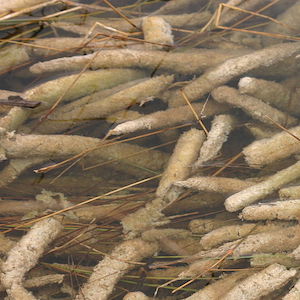In situ effects of arsenic, aluminium and chromium stresses on algal periphyton of the river Ganga at Varanasi, India

All claims expressed in this article are solely those of the authors and do not necessarily represent those of their affiliated organizations, or those of the publisher, the editors and the reviewers. Any product that may be evaluated in this article or claim that may be made by its manufacturer is not guaranteed or endorsed by the publisher.
Accepted: 30 May 2023
Authors
In situ effect of metal stress on periphytic algal communities of a river was studied using chemical diffusing substrates. The metal stress caused the inhibition of periphytic biomass in a concentration-dependent manner. The study indicated differential response of various periphytic groups to different metal treatments. Diatoms exhibited tolerance against arsenic (As) and aluminium (Al) treatment but displayed sensitivity against chromium (Cr) treatment. An increased abundance of cyanobacteria was noteworthy in Cr enrichment, but Al and As were hazardous to these organisms. The relative abundance of green algae also increased in all three test metals. The metal stress lowered the species richness and diversity of periphytic algae, apparently due to the elimination of some of the sensitive species followed by an increased abundance of tolerant forms. Periphytic taxa tolerant to one metal were not necessarily tolerant to other metals or metalloids, and vice versa. The metal-induced changes in algal community composition will lead to severe ecological consequences by affecting biological diversity and in turn productivity of aquatic systems. Since algae occupy the aquatic food web base, any harmful effect on these organisms would have repercussions at higher trophic levels. Thus, it seems urgent to incorporate biomonitoring practices and chemical analysis to monitor the river Ganga's ecological health.
Ethics Approval
Andras Abony, MTA Centre for Ecological Research, Institute of Ecology and Botany, Vácrátót, HungarySupporting Agencies
SERB, New Delhi - SERB-SRG (SRG/2020/000432)How to Cite

This work is licensed under a Creative Commons Attribution-NonCommercial 4.0 International License.






